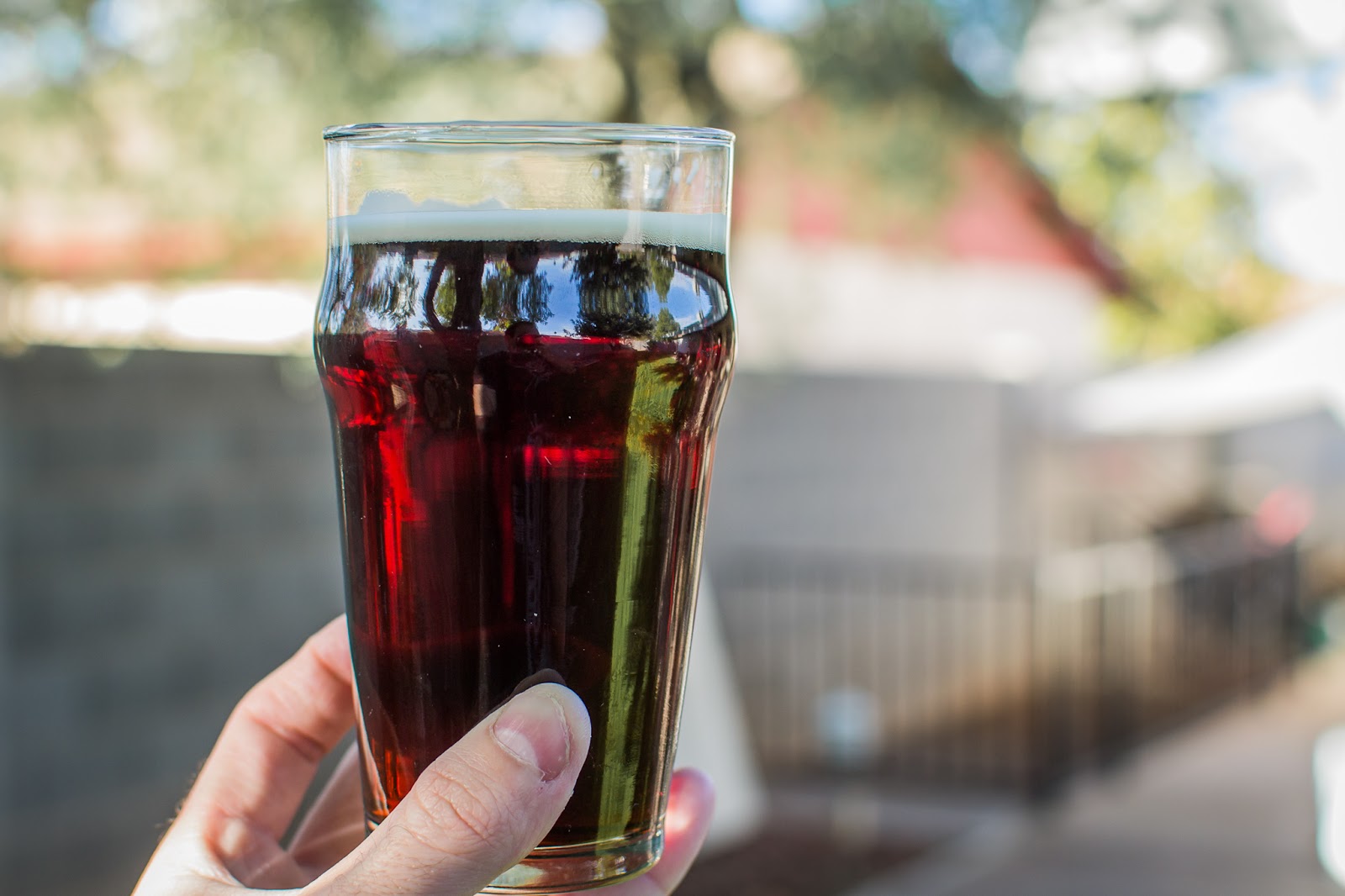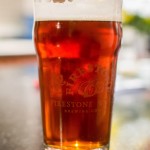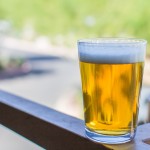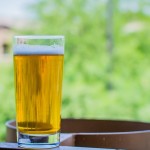Scottish 70/-

This is a new style for me. Most of the beers I’ve brewed lately have all been pretty high in gravity, so I want to brew something sessionable. Sessionable doesn’t have to mean flavorless, so I looked through some flavorful beer styles that were sub 1.040. Scottish 70 Shilling jumped out at me. This is also perfect, since with the holiday season fast approaching, it’s nice to be able to offer guests a beer that won’t knock them on their ass in a hurry.
When I’m completely unfamiliar with a beer style, I’ll turn to a trusted, or safe recipe that I can get a feel for it from. The first recipes I usually reference are Jamil’s from the Brewing Network. I don’t take his recipes as the holy grail, but I know I’ll always get a good representation of the style. Alas, I’m brewing his Scottish 70/- at face value. I’ll use Warrior for bittering, as its clean, and I’m getting rid of my 2011 supply, but the recipe is unchanged otherwise.
Low gravity beers make for smooth brew days. One thing to note is that I’ve never mashed a beer quite this high — 158*. The high mash temp is to keep Cali Ale yeast from ripping right through this beer. Despite the high percentage of crystal malts, the normal attenuation percentage for 001 would finish well in the 1.00x range. Following the mash was a typical 60 minute boil. I chilled to 62F, and pitched my yeast. 1.039 is an awkward gravity to pitch for five gallons unless you have a super fresh yeast vial; I didn’t. Thankfully my American Stout was on its third day of fermentation, so I top cropped a small amount of 001 to supplement the vial I pitched.
Brewed: 11-24-12
Kegged: 12-10-12
OG: 1.039
FG: 1.012
ABV: 3.5%
IBU:16
6 Gallons
5.5lbs 2-Row
1lb English C60
8oz Munich
8oz Honey Malt
4oz C120
3oz Chocolate Malt
Mash @ 158*
9g Warrior @ 60
WLP001 – California Ale Yeast
Cali Ale yeast never exactly ferments fast, but it moves through a 1.039 beer pretty quick. I kept it fermenting at 64F for the first few days, then let it rise up to 68* to finish out. I’m definitely becoming a bigger fan of WLP001 rather than US05, as it flocculates much better than US05 does. I don’t remember US05 being as poor of a flocculator as it’s become, but that will push me to continue to use White Labs for now.
I’ll admit, looking at this recipe, I was scared it might turn out cloying. There’s almost 16% Crystal malt and over 6% Honey malt. And for those unacquainted, Honey malt makes a big flavor impact. Nonetheless, I was pleasantly surprised, as this beer is very light on the palate. The aroma is all malt. Nice clean caramel and toffee flavors, but it doesn’t smell overly sweet. The flavor is very similar with some raisin-like qualities that pair up with some biscuity, bread-like notes. The really interesting thing is, I expected a sweet, sticky, or cloying finish based on the initial sweet flavors, but it isn’t there. The beer finishes smooth and clean, which is where this recipe really shines.There’s almost an unfermented wort type aroma to the beer, but it’s in a very faint, pleasant sort of way.
This beer could quickly become a staple for me, and it has piqued my interest in brewing more low gravity beers. It’s a very refreshing and flavorful beer. And it’s really nice to be able to drink a pint or two without getting trashed. Also, it’s an excellent batch to re-pitch yeast from, which is a nice bonus. Jamil’s recipes are always great, but this one is pretty fantastic. I’m going to submit a couple bottles to a couple comps to see what some BJCP judges think. There’s a couple minor tweaks I’m considering making to this beer, but I’d like to see if the judges echo the same thoughts.
Cheers and Happy Holidays!




Hello there! I am really surprised to see this didnt have any comments yet. I am a huge fan of your blog. I discovered it a couple months ago. You really have some great content here, and I love the fact that you are brewing/blogging frequently.
I have been brewing for about two years now, and have converted to 2.5 gallon BIAB batches. I also brew 3-4 times a month. This was the first recipe I brewed after I bought BCS and I thought it seemed too thin, but I dont think I hit my mash temps. After reading your blog I definitely want to give this another shot. I really like a grainy taste to my malty beers. What tweeks do you think you would add?
~Adam
Thank you! As far as the 70/- goes, I'd be curious where your FG ended up, as ya, the very high mash temp is pretty critical to this recipe with that yeast. Mine has a lighter, low-medium mouthfeel, but I wouldn't call it thin or watery. It did seem rather thin when it was flat, but as it fully carbed up, I've found the mouthfeel seems….right for lack of a better word.
My fiance instructed me that this beer needs to stay on tap regularly, so I'll be playing around with the recipe in the near future.
That's a pretty pint! I have brewed Jamil's 70/- a bunch of times (perfect starter-beer as you pointed out), I try to always have some around. I've bittered with EKG and Northdown with essentially the same result. I got a Silver in the one competition I sent it to, but now that the same batch has cold conditioned for a while it's even better. I might send some of the last bottles that I've hung onto to a competition soon, been cold stored since September and like Jamil says this beer tends to improve with a period of cold storage.
I brewed a stronger Scottish Ale (probably what would be considered around 100/-) last night intended to be a Robert the Bruce clone, I might have to make a 70/- version of that if it turns out as good as I'm hoping.
That's a good idea. My fiance's parents were in town, and we've almost kicked this keg. I'm going to bottle off a sixer before it runs out to set in the fridge for a couple month.
I like the recipe and think it is a great style to dial in your system – you get a little too much efficiency and you have a 80/- and not enough you have a 60/-. I first brewed this about 2 years ago and it won be 2nd BOS in the Delaware State Fair competition.
another fantastic low gravity beer that offers a lot of room for variation from brewer to brewer is berliner weisse. from the grain bill to the method of souring to the percentage soured and so on, there is really a ton of room for any brewer to distinguish his BW.
i've reused the same kolsch yeast each time i've made my BW. it's a very flavorful beer and is also a great segue for friends who may be interested in slowly expanding their comfort zones.
I saw you re-pitched the yeast from your blonde. I would love to see a write up on how you do this! I am going be brewing this and I might throw in some flaked oats.
Ya, definitely. I'm still sorting out my new boil off rates, everything I've brewed lately has been a couple points high, or a couple points low.
Berliner Weisse is definitely a style I want to brew this year. I have zero experience with sours though, so it's uncharted territory. Any favorite recipes?
I was planning on posting an article on repitching yeast and fermentation temperatures, but we were traveling over New Years. I'll have one up soon. For this beer, I pitched 1vial of WLP001 and added about 50mils of top cropped krausen from my American Stout that was fermenting. The Stout is the beer I used the yeast from the Blonde. The cake from the Scottish ale, I used to ferment 10gal of a Blinde Pig clone you'll see posted in a week or two.
i've done the same one twice with minor tweaks.
5:4 pilsner:malted wheat targeting a gravity of ~1.032-1.035
mash @ 150
at this point, let the mash cool to ~100 and pitch some additional grain. there is naturally occurring lacto on all grain husks. there is also naturally occurring other stuff, so this method involves some variance!
cover the mash with saran wrap or flush the headspace with co2. keeping out o2 is pretty important for your sanity, since it reacts in an awful way with the lacto.
it is up to you whether to sour the whole batch and how long to let it sour. the key is to hold the temperature at around 100 to keep the lacto active.
i've done 48 hrs twice. i did a 100% sour mash the first time and 50% the second. the first was a bit too intense, and the second was pretty close to what i'd like to hit. i'll probably do 60% next time.
at this point, lauter/recirculate to clarify and bring the boil to 180 or so to kill off the lacto.
in the partially soured batch, i conducted a separate (equal size) mash, and FWH'd for 5IBU with some mittlefruh.
chill, pitch kolsch yeast.
i also dry hopped with 1.5oz citra, which is adds very complementary tropical flavor to the tart lemon sourness.
Scott,
Here is a video about what Justin is talking about.
http://ec.libsyn.com/p/f/b/4/fb4ccea2f893dd1d/bbv10-31-12sourmash.mp4?d13a76d516d9dec20c3d276ce028ed5089ab1ce3dae902ea1d01cd8036d6cd5d3e2f&c_id=5094343
I've also never done a sour beer, but I would love to try Berliner Weiss.
I just brewed this beer again. Well see how it comes out the OG came out high at 1.055. I only hopped with 1oz of EKG. My mash was 157 at mash in, but lost a lot of time over the hour 150.
It's going to be a little out of style, but it could still be really tasty. I'd expect something a little stronger than an 80 shilling.